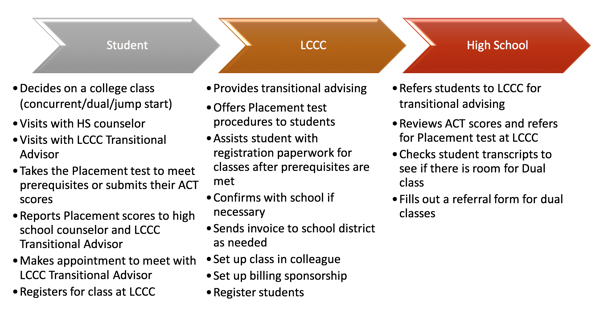Published on
Widening the Pipeline: Offering College Credit to High School Students

“Mom, do you really have to talk to all my friends about their college opportunities?” This is a complaint my daughter often has of me. I explain, yes, I want them all to have the opportunity for a seamless college transition. Insert eye rolling. For the first seven years of my work at Laramie County Community College (LCCC), I was honored to work for Gaining Early Awareness and Readiness of Undergraduate Programs (GEAR UP), a federally funded college-preparation grant. I recently moved on to work with concurrent and dual enrollment at our college, which means creating a college-going culture is a large part of my role at LCCC High School Programs. In 2014 my predecessor and mentor began the self-study our college needed to pursue accreditation from the National Alliance of Concurrent Enrollment Partnerships (NACEP). Today we have the distinct honor of being the only NACEP-accredited community college in Wyoming since 2016. There are about 104 accredited programs in the United States listed on the NACEP website. LCCC chose to pursue accreditation not only to provide students with an excellent college class but also to stay compliant with our state laws and our college strategic plans. Wyoming is one of a few states that encourage students in high school to earn college credit.
This is a wonderful opportunity for my daughter and her friends since they, like many other high school students, will need some sort of post-secondary education — whether it is a certificate or a diploma — in order to be competitive in a global market. Many students are taking advantage of college credit while in high school through concurrent or dual-enrollment programs. The advocates for concurrent enrollment are thrilled with success rates of students completing not only high school but also college. The opponents say that it is not a real college experience.
I would argue that taking one or two college classes per semester is not meant to be a full college experience. Instead, concurrent and dual enrollment is a transition to experience college-level academic work. Students who take the challenge to increase their skills in a career or technical field or in a transferable academic course have found it easier to adapt to life after high school if they have taken a concurrent or dual enrollment course or two. They not only save time but also money by participating in an early college experience.

Concurrent enrollment classes allow students to get high school and college credit; these are typically classes taken on a high school campus with a college-approved high school teacher. Dual-enrollment classes also allow students to get high school and college credit; however, these are taken on a college campus with a college professor. There are many other variations of concurrent and dual enrollment like dual credit, career academies and middle college—your school may call it co-enrollment or articulated credit. Our college even offers a Jump Start option for students wanting only college credit because they have met their high school obligations through the classes being taken senior year. Regardless of what the program is called, they are all designed to smooth the transition from secondary to post-secondary education.
Building a sustainable program seems daunting, but the NACEP standards can help begin the process. Standards that address faculty, curriculum, assessment, students, partnerships and program evaluation provide specific guidelines and provide quality and rigor so that students in the high school classroom are held to the same standards as those on a college campus classroom. The NACEP National Conference has “Accreditation 101” workshops that explain these standards in detail, and, as a peer reviewer for NACEP, I would highly recommend all concurrent enrollment programs take advantage of these quality improvement workshops, even if you don’t want accreditation.
At LCCC, we started the conversations with school district administrators and then found credentialed teachers willing to be adjuncts. The teachers then worked with college faculty to align the courses so that the class outcomes were the same and that the assessments, grading and curriculum correlated with one another. School deans and district administrators then approved the curriculum agreement. Students who were able to meet the same pre-requisites as any other college student were able to register for classes. A Memorandum of Understanding was used to provide funding for students. Concurrent enrollment course are free to students in our service area. We bill the school district for tuition, and they bill us the exact same amount for school costs, so it is a wash between the community college and the school district. This has been mutually beneficial for all partners and allows us to provide equal access to college credit for high school students.
LCCC also provides transitional advising for students considering taking a class on campus. We like to remind students and parents that there might be financial restrictions when the student graduates high school and enrolls in college if they have failed or withdrawn from courses. Students need to realize that they are actually starting their college transcript the first time they enroll in a college-credit class. We also remind them that, just like Advance Placement and International Baccalaureate credits, only the receiving college/university will accept credits from our transcripts at their discretion.
So, while I may be an embarrassment to my daughter, I will continue to be an advocate for a college education. It is true that not everyone is cut out for college, and there is a lot to be said for on-the-job training. However, I am glad to be a part of a program that gives my daughter’s friends (and other high school students) the opportunity to get a head start on their college coursework.
Author Perspective: Administrator
Author Perspective: Community College



